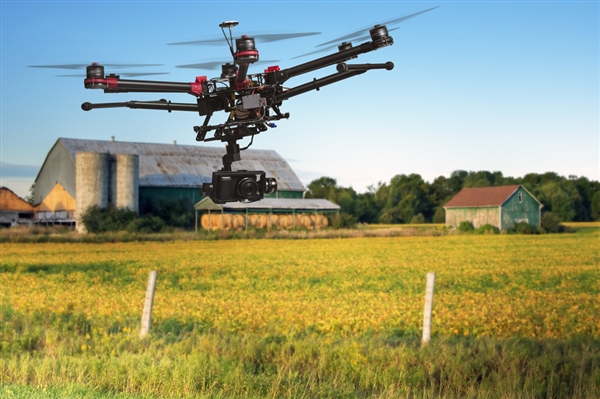SSZTC85 september 2015 BQ40Z60

While the adventure-seeking drone movement is reaching new heights, we are seeing things like drone competitions and even models suitable for kids to use. The industrial/commercial drone sector is also taking off, albeit with less fanfare. Drone applications in the industrial space include mapping, security, inspection, search and rescue, logistics, mining, and agriculture. Let’s take a closer look at agriculture, and how and why drones are essential to its future.
Farming has been around for more than 10,000 years. The Industrial Revolution of the 1800s accelerated productivity to stunning levels with new mechanized methods, enabling fewer farmers to tend massive farms and solving the problem of how to feed a dramatically growing population. The latest U.S. Census shows that less than 1% of the U.S. population is involved in farming more than 900 million acres of land. Population projections indicate that Earth will add another 2.7 billion people by 2050, necessitating the need for an environmentally safe and increasingly efficient/affordable food supply of up to 70%.*
Traditional agriculture on large farms relies on uniform planting/caring/harvesting decisions for the whole farm at predetermined schedules. Precision agriculture is the site-specific management of cropland at a micro level. Farmers collect real-time data on soil quality, humidity, air quality and crop maturity and feed that data into analytics engines to generate smarter crop-management decisions for a specific site within the larger farm. Think of precision agriculture as customized/optimized farming for squares of feet rather than hectares.
Drones are uniquely suited for ushering in the next technological revolution in precision agriculture. With their small size, easy remote maneuverability, and vertical takeoff and landing capabilities, drones are the perfect solution to data gathering and taking related action. A report released by the Association for Unmanned Vehicle Systems International predicts that the legalization of commercial drones will create more than $80 billion in economic impact (such as revenue and job creation) between 2015 and 2025, and that precision agriculture will be a major contributor to that growth.
Agriculture drones available from PrecisionHawk, Agribotix, Dragonfly, Precisiondrone and SenseFly pack an array of tools tailored for precision agriculture. These drones are typically equipped with multispectral cameras for high-resolution pictures, GPS receivers, sensor platforms to read data from sensors placed in the field, multiple microcontrollers and integrated data management serviced by big data/cloud computing for easy access and sharing. Whether collecting humus content or detecting the onset of fugal infestation in hard-to-reach terrain and targeting the spraying of fungicide, drones have it covered with the proverbial press of a button.
The key challenge with any drone is accurately gauging battery capacity so that there’s sufficient time to alter the drone’s flight path and dock it safely for its next flight. Texas Instruments has a variety of battery chargers, gauges and protectors to cover the spectrum of application needs and even has a device that includes charging, gauging and protection all in one package – the bq40z60.
As new farming techniques are being adopted with the use of drones, technology inside the drones is advancing as well. Battery gauging offers the opportunity to lengthen the time your drone operates and helps prevent drone losses, saving farmers from taking time to retrieve these devices and protecting equipment from being damaged.
Additional Resources
- To learn more about TI’s battery-management options for your specific drone’s needs, see Battery Management ICs.
- Click here to watch how TI is enabling the future of farming.